[The human brain is] an enchanted loom where millions of flashing shuttles
weave a dissolving pattern, always a meaningful pattern,
though never an abiding one, a shifting harmony of sub-patterns...
It is as if the Milky Way entered upon some cosmic dance.
weave a dissolving pattern, always a meaningful pattern,
though never an abiding one, a shifting harmony of sub-patterns...
It is as if the Milky Way entered upon some cosmic dance.
—Sir Charles Sherrington, Man on His Nature (1940)
As the Lucy Production Notes puts it,
When the chemical is accidentally unleashed in and absorbed by Lucy’s system, her body begins the unimaginable: her cerebral capacity is unlocked to startling, and previously hypothetical, levels. As she attempts to comprehend and incorporate the incredible changes in her mind and body, Lucy begins to feel everything around her—space, air, vibrations, people, even gravity—and develop superhuman traits including telepathy, telekinesis, expanded knowledge and breathtaking control over matter.
One caveat, before we go further: drugs are not the solution. That is not the way to do it.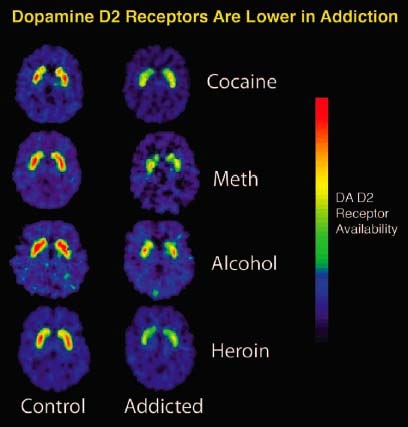
Along her journey, Lucy is stripped of her human attributes: “It's like all things that make us human are fading away.” In Sufism, they would be replaced by divine attributes.
Our heroine, played by Scarlett Johansson, even undergoes her own personal Ascension (miraj) at the end. Her final words are: “Life was given to us a billion years ago. Now you know what to do with it.” The name of the actor playing the French police officer says it all: Amr Waked or A. Waked, “awaked.”
“Lucy” refers to the first hominid, whose skeleton was discovered in Ethiopia in 1974 and dated to be more than 3 million years old. Just as that Lucy was the first protohuman, the Lucy of the movie is understood to be the first transhuman. (They even touch fingers towards the end of the film!)
Central to the movie’s theme is the claim that we ordinarily use only ten percent of our brains. This quickly gave rise to a spate of articles debunking the “ten percent of brain myth,” as the associated Wikipedia article calls it. These build on earlier articles and books which likewise took delight in debunking the possibility that the human brain has anywhere else to go than where it is already (and I don’t mean its physical location). Apparently, they say, it all started with famed psychologist William James, who said: “Compared with what we ought to be, we are only half awake... We are making use of only a small part of our possible mental and physical resources.” (The Energies of Men (New York: Moffat, Yard and Company, 1914) [1907], p. 14.) Note that James’ first sentence is in agreement with the Prophet’s Saying: “People are asleep.”
The arguments advanced by the “debunkers” can roughly be summarized as follows:
- Brain imaging or “neuroimaging” techniques have revealed that most parts of the brain are active, even during sleep.
- If there were unused parts of the brain, their removal should cause no problems. Yet injury or removal of almost any part of the brain results in serious loss of one faculty or another.
- If parts of the brain were unused and therefore unnecessary, they would not confer an evolutionary advantage, and natural selection would have weeded them out long ago.
These are reasonable arguments. But are they enough to prove the point?

Note that the first two arguments imply that parts of the brain in terms of the brain’s volume are being discussed. “Here’s where we tiptoe around the sleeping giant…” These arguments set up a straw man, and then merrily proceed to demolish it. As for the last one, it takes Darwinian evolution and natural selection for granted. I shall deal with it further below. For now, let us focus on the claim that almost all parts of the brain’s volume are fully active.
Interneural Connections
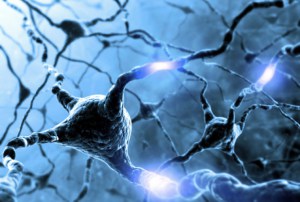
I first learned about this putative “myth” from Arthur Koestler. Younger people may not remember him, but he was a famous writer and an intellect to be reckoned with. In his case, it was not even ten percent of the brain. Rather, he said, “Neurologists have estimated that even at the present stage we are only using two or three per cent of the potentialities of its built-in ‘circuits’.” (Arthur Koestler,The Sleepwalkers, London: Hutchinson, 1959, Epilogue, p. 514/324.)
This radically shifts the center of gravity of the question, and therefore of the answer.
Now of course, the matter of the brain’s circuitry is the one subject that all debunkers seem to shy away from at all costs. “Nothing to see here, folks, just move on…” Yet it is the form in which the ten-percent-of-the-brain “myth” was originally posed.
The human brain is the most complicated structure in the universe. According to one source, there are around 200 billion neurons in the brain. Each of these neurons is connected to between 5,000 and 200,000 other neurons. The number of ways that information flows among neurons in the brain is so large, it is greater than the number stars in the entire universe.
However, let us take a more conservative source, which estimates that the average human brain has about 100 billion neurons. Each neuron may be connected to up to 10,000 other neurons, passing signals to each other via up to 1 quadrillion synaptic connections.
It is also known that neural connectivity increases with learning and experience.
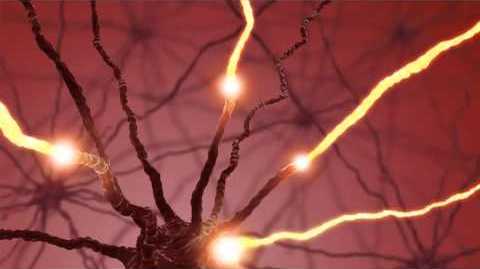
I invite anyone to prove beyond the shadow of a doubt that all of these neural pathways are being used simultaneously all the time (or indeed even once in a lifetime).
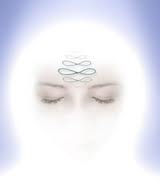
As a matter of fact, neuroimaging proves this cannot be the case. For if such a thing were to happen, all parts (in the volumetric sense, like the contenders would have it) of the cerebral cortex would have to light up equally at full power, like a miniature sun. And the fact that different parts of the brain show heightened activity in different brain scans should be proof enough that not all parts are equally or fully active simultaneously. Surely this ought to be trivial.
Even the Lucy Production Notes was careful to phrase the question as follows:
“If each one of the 86 billion densely packed neurons in a human brain fired at once, could that person become, in fact, superhuman?”
This raises, in other words, a stupendous question: can the brain “lase”?
Normal brain scans differ from those taken under meditation or while praying.

Nevertheless, we do not necessarily claim that a spiritually fully realized human being would be identifiable through brain imaging techniques. This may well be the equivalent of deducing E = mc2 from the squiggles of Einstein’s EEG, or “seeing” Mona Lisa in Leonardo’s PET scan. Perhaps such things may become possible someday, but until then, they’re the equivalent of reading your fortune from tea leaves. The internal state of such a person may well remain hidden to everyone else. A spiritual phenomenon may or may not have a physical correlate. The truth is, we simply do not know, for such a person has never been found and hooked up to the equipment. What we do know is that all the neuroimaging to date has been performed on ordinary people, which thus can neither prove nor disprove anything about the case of extraordinary human beings.
But we do not have to bring in the matter of neural pathways to fathom that we are not using our brains in full measure. Our brains have recorded everything that has happened to us from the moment we were born (and perhaps even earlier). Yet we do not remember everything. In the 1960s and 70s, neurosurgeon Wilder Penfield touched parts of the open brains of patients with metallic probes while they were conscious. Some relived long-forgotten childhood experiences, others listened to a symphony they had heard years before. One patient felt as if she were at the concert while also being aware that she was in the operating room. Penfield called this “double consciousness.” These ordinarily inaccessible experiences prove that the brain’s full capacity is not being used.
(Apparently, this kind of experience can also occur without the prod of an electrode. According to the late author Colin Wilson, historian Arnold Toynbee described moments in which certain events in history suddenly became as real for him as if he was actually there, watching them. Much like Penfield, Wilson called this “duo-consciousness”—“It is almost as if your mind possessed the weird power of being in two places at once.” (Colin Wilson, Poetry and Mysticism (London: Hutchinson, 1970), p. 57.)
Actually, Toynbee’s case raises an even bigger bugbear, for it signals a nonordinary-type event (NTE), referred to as “retrocognition” in parapsychology.)

Right now, we are conscious and interacting with the external world. Yet the unconscious real-time processing going on in the brain or psyche is hidden from us. If the full capacity of the brain were being used, we should be aware of these contents, as well.
Another way to see this is how people suddenly develop (or lose) certain mental abilities after accidents involving the brain. People have been known to acquire artistic skills after having an accident. Conversely, Lev Landau, the famous Russian physicist, lost his mathematics and physics skills after a car accident.
Reductionism

But the real motivation behind the debunkers’ zeal to demolish the ten-percent myth lies in reductionism. We can call this the philosophy of “nothing but.” The world is “nothing but,” the mind is “nothing but,” the brain is “nothing but.” These are attempts to reduce the world to a level at which it can be comprehended. And this level is different for everyone. (Famously, the Hottentots could not count beyond 3, after which came “many.”) We have to realize, however, that a plucked chicken is no longer a chicken (in the metaphorical sense, of course). Does this point to a deep-seated fear, an existential angst on the part of the reductionists, that their worldview will collapse if threatened—and with it, reality? Your guess is as good as mine.
In the case of brain research, the fallacy of reductionism often arises from a biconditional (or bidirectional) logical connective: “if P, then Q” and “if Q, then P”. The problem here is that while proposition (or statement) P implies Q, Q may not always (or necessarily) imply P; for example, there may be other true propositions Q1, Q2, … that also imply P.
For instance, a researcher touches a certain part of a subject’s brain, and the subject has an experience of God. From this, the researcher concludes that the “God experience” is solely a physical phenomenon. Yet one can also have such an experience without any physical stimulation whatsoever. It can have other causes. We are not permitted to conclude that the experience is physical in nature just because it can be mimicked physically.
Take another, simpler example. You have a vivid dream that you’re in a falling elevator. Your heart races, your body reacts as if you were actually in a falling elevator, and so on. Can we infer, from this, that all subjective experiences of falling in an elevator have no objective correlates (that is, can we infer that they’re all dreams)?
Darwinism
The foregoing has shown, I hope, that the so-called 10-percent “myth” is not so easily dismissed. Let us now consider the claim that natural selection would not allow such a gross error as unused brain capacity to originate. Here, for example, is how one source argues the case:
Evolution does not allow any wastefulness. Wastefulness causes an exclusion of the gene pool.
Like all other organs, our brain has been shaped by natural selection. While the brain only weighs 2% of the total body weight, it uses 20% of the whole energy. Thus, brain tissue is metabolically expensive to grow and run. Regarding these high costs, it is improbable, that evolution would have permitted the wasting of resources on a scale necessary to build such an inefficient and only partially used organ! A brain that only works with 10% of its power would not be worth the high costs and thereby human beings with their large brains would have already been excluded from the gene pool.
In reply, let’s leave the word to Alfred Russel Wallace, co-discoverer with Charles Darwin of evolution and natural selection. In 1869, Wallace turned his attention to the higher human faculties:
Neither natural selection nor the more general theory of evolution can give any account whatever of the origin of sensational [sensory] or conscious life. They may teach us how, by chemical, electrical, or higher natural laws, the organized body can be built up, can grow, can reproduce its like; but those laws and that growth cannot even be conceived as endowing the newly-arranged atoms with consciousness. But the moral and higher intellectual nature of man is as unique a phenomenon as was conscious life on its first appearance in the world, and the one is almost as difficult to conceive as originating by any law of evolution as the other. We may even go further, and maintain that there are certain purely physical characteristics of the human race which are not explicable on the theory of variation and survival of the fittest. The brain, the organs of speech, the hand, and the external form of man, offer some special difficulties in this respect, to which we will briefly direct attention.
In the brain of the lowest savages, and, as far as we yet know, of the pre-historic races, we have an organ so little inferior in size and complexity to that of the highest types (such as the average European), that we must believe it capable, under a similar process of gradual development during the space of two or three thousand years, of producing equal average results. But the mental requirements of the lowest savages, such as the Australians or the Andaman islanders, are very little above those of many animals. The higher moral faculties and those of pure intellect and refined emotion are useless to them, are rarely if ever manifested, and have no relation to their wants, desires, or well-being. How, then, was an organ developed so far beyond the needs of its possessor? Natural selection could only have endowed the savage with a brain a little superior to that of an ape, whereas he actually possesses one but very little inferior to that of the average members of our learned societies. …
The same line of argument may be used in connexion with the structural and mental organs of human speech, since that faculty can hardly have been physically useful to the lowest class of savages; and if not, the delicate arrangements of nerves and muscles for its production could not have been developed and co-ordinated by natural selection. This view is supported by the fact that, among the lowest savages with the least copious vocabularies, the capacity of uttering a variety of distinct articulate sounds, and of applying to them an almost infinite amount of modulation and inflection, is not in any way inferior to that of the higher races. An instrument has been developed in advance of the needs of its possessor. [Emphases added.]
In the same article Wallace added, “… we must therefore admit the possibility, that in the development of the human race, a Higher Intelligence has guided the same laws [of variation, multiplication, and survival] for nobler ends.”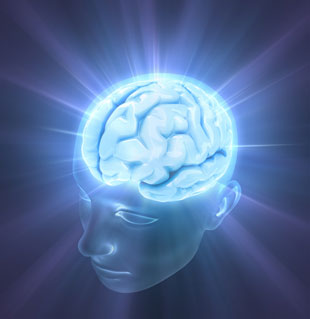
Lest there be any ambiguity about what is being said here, Darwin himself understood the shattering blow Wallace had inflicted on the theory of human evolution. In a letter to Wallace in March 1869, Darwin wrote, “I hope you have not murdered too completely your own and my child.”
The gravity of Wallace’s argument and Darwin’s response might not be apparent at first glance. It is not just that Wallace is making these points—it is that Darwin is implicitly acknowledging and conceding them. So the two founders of evolutionary theory are basically in agreement that Darwinian evolution leaves human evolution unexplained. Not only that: they also agree that human beings possess vast untapped potential, leaving all claims of evolutionary impossibility in the dust. This is a bit like scientists “proving” that aerodynamically, a bumblebee shouldn’t be able to fly—and yet it does.
Almost 150 years later, Wallace’s points remain as true as ever. It was on this basis that Arthur Koestler wrote: “It is entirely unprecedented that evolution should provide a species with an organ which it does not know how to use; a luxury organ... far exceeding its owner’s immediate, primitive needs; an organ which will take the species millennia to learn to put to proper use, if it ever does.” (Koestler, The Ghost in the Machine (London: Hutchinson, 1967), Chapter 17.)
Thinking About the Brain
Let us return to Wilder Penfield. He summed up a lifetime of professional experience in The Mystery of the Mind (1975). In his many years of research, Penfield could not find a decision-making (or “will”) center in the brain. This led him to conclude that the mind is different from the brain. The mind, he said, is the programmer, the brain the computer. The mind directs, the brain executes. Or in more recent terminology, we could say that the brain is hardware, the mind (or spirit) is software.
Note that this is a simile, a metaphor. We do not know that the brain works like a computer. In fact, it probably does not. This is, in this Computer Age, just a convenient analogy for how the brain works. (And those synaptic connections mentioned earlier exist, regardless of how it works.)
The more troubling issue is what philosopher David Chalmers called the “hard problem” of consciousness. Here is how he originally phrased it:
The really hard problem of consciousness is the problem of experience. When we think and perceive, there is a whir of information-processing, but there is also a subjective aspect. ... Why is it that when our cognitive systems engage in visual and auditory information-processing, we have visual or auditory experience: the quality of deep blue, the sensation of middle C? How can we explain why there is something it is like to entertain a mental image, or to experience an emotion? It is widely agreed that experience arises from a physical basis, but we have no good explanation of why and how it so arises. Why should physical processing give rise to a rich inner life at all? It seems objectively unreasonable that it should, and yet it does. If any problem qualifies as the problem of consciousness, it is this one.
In other words: how does the signal that carries information from the eye about light of a certain frequency get translated, once it reaches the interior of the brain, into the red ball that we perceive in our consciousness?For more than two hundred years, our greatest neuroscientists have attacked this issue with all the considerable means at their disposal. And in many areas, great, even phenomenal, progress has been made. Yet concerning this deceptively simple question, our scientists have hit a brick wall, which has resolutely refused to budge. And explaining away consciousness as an “emergent property” of “neural networks” or “sufficiently complex self-organizing systems” simply doesn’t cut it. (As Goethe observed: “When the mind is at sea, a new word”—or phrase—“provides a raft.”) Given our total lack of success in the past, the prospects of a solution in the immediate future look dim, though of course hope springs eternal.
Perhaps the great Sufi poet Hafiz (Khwaja Hafiz of Shiraz) hit the nail on the head when he said:
You do not venture beyond the house of Nature.
How can you expect to reach the neighborhood of Reality?
How can you expect to reach the neighborhood of Reality?
Chaos vs. Cosmos
This may be a good place to mention the relationship between chaos and cosmos. In his Timaeus, Plato suggested that the universe “is the handiwork of a divine Craftsman (“Demiurge,” dêmiourgos, 28a6), who, imitating an unchanging and eternal model, imposes mathematical order on a preexistent chaos to generate the ordered universe (kosmos)... the outcome of the deliberate intent of Intellect (nous)...” (Note that we are using the term “chaos” in its original philosophical sense, not in the more recent mathematical sense of sensitive dependence on initial conditions, as treated by chaos theory.)
This refers, of course, to the origin of the universe. Yet I want to suggest that there is another way of understanding chaos and cosmos.
Today, we live in a secular world. This world is not unlike a shattered vase. We are unable to make sense out of the vast multiplicity (kasrah) of fragments we behold. It is only God who will integrate the shards for us, who will imbue them with sense and meaning, and will, if we are able, lead us to the vast edifice that comprises Unity (wahdah).
In other words, do not think that we inhabit a cosmos. Today, in this secular world, we actually live in chaos. Our lives are a senseless rush of disjoint events. In this alternative interpretation, cosmos lies not in our past, but in our future. It is only God who will help us piece the vase together, and will finally reveal the true face of the cosmos in all its breathtaking magnificence (“Everything perishes save His Face,” 28:88).

Sufism and the Brain/Mind/Spirit/etc.
I now leave the word to Master Ahmet Kayhan:
Behind this mind God has given us, there is an infinite dam. A dam that is beneficial to everything, to animals, to plants. Don’t be a candle, be a thousand-watt lightbulb.
No one wants to leave their shell. Some are the size of a walnut shell, some of an egg, some of a pear, some of a quince. If we could go up to the realm of space? The realm of space is so wide... But everyone likes their own mind. Get out of that eggshell, for heaven’s sake!
Food, drink, work, these are normal. But decline, decline, decline, we’re going to go tomorrow or the day after. A handful of brains is going to become soil. Let’s wake up a little bit.
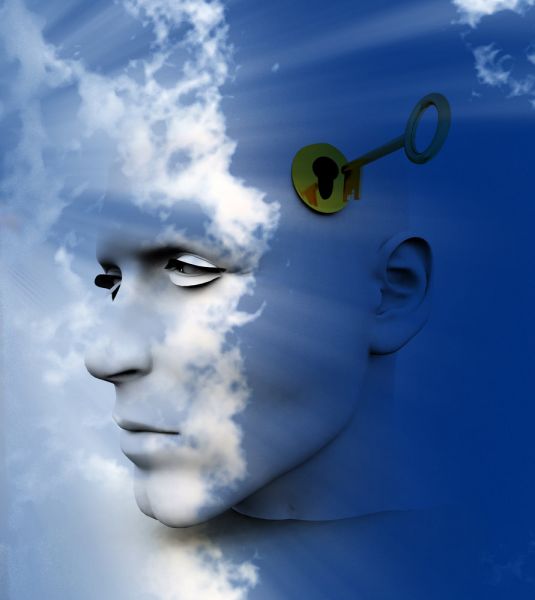
If we work, both the eyes of our head and the Eye of our Heart will be opened here. If we don’t work, it’ll be opened over there, but it’s better if it’s opened while here. If you can open that, with your mind, you can see the entire universe. [Jamshid’s Wineglass.] This eye’s vision is limited.
Let’s work on this mountain a little bit, okay? [‘Mountain’ means the body.] This head is the antenna of the eighteen thousand worlds, it’s the antenna of the Torah, the Psalms, the Gospel and the Quran. We’re going to take it and bury it in soil tomorrow or the day after, it’ll be a pity. They’re going to ask us, ‘Which keys [locks] did you unlock?’
They’ve built the rockets, they’ve gone to the moon, to Mars, they’re going to go to the stars, but we can’t link the mind with the heart or the heart with the mind down here. The distance between the two is one foot. Yet we can neither lower the mind to the heart, nor can we raise the heart to the mind. The mind is separate, the heart is separate, the spirit atrophies. If you don’t water a flower, what happens? It deteriorates. Let us join either one with the other, or vice versa. Such a short distance! They travel thousands of miles, they give up at such a short distance.
They send so many rockets into space, so many spaceships at so much expense. But they haven’t been able to build the rocket of the shortest distance:
They haven’t built the spaceship
between the mind and the heart.
between the mind and the heart.
(TPM, pp. 51, 254, 260, 261. Emphasis added.)
Thank you, Luc Besson, for providing an opportunity to contemplate such matters.